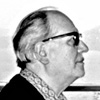Olivier Messiaen
 Born in 1908 in Avignon into a literary family (his father, Pierre Messiaen, was a translator and his mother, Cécile Sauvage, a poet), Olivier Messiaen was marked by the idea of language. He first devised his own language (his book Technique of My Musical Language was completed in 1943) and based it on the modality that, as a child, he had discovered in Debussy, and that he later developed at the Paris Conservatory with Paul Dukas (composition), Maurice Emmanuel (history of music) and Marcel Dupré (organ). He then created his own poetic language, from which all his vocal works issue. Finally, identifying the musical language of others fed his teaching, be it his private lessons (given, between 1943 and 1947, to an inner circle of pupils that included Pierre Boulez and Yvonne Loriod, his future wife) or his worldrenowned classes in the Paris Conservatory from 1947.
Born in 1908 in Avignon into a literary family (his father, Pierre Messiaen, was a translator and his mother, Cécile Sauvage, a poet), Olivier Messiaen was marked by the idea of language. He first devised his own language (his book Technique of My Musical Language was completed in 1943) and based it on the modality that, as a child, he had discovered in Debussy, and that he later developed at the Paris Conservatory with Paul Dukas (composition), Maurice Emmanuel (history of music) and Marcel Dupré (organ). He then created his own poetic language, from which all his vocal works issue. Finally, identifying the musical language of others fed his teaching, be it his private lessons (given, between 1943 and 1947, to an inner circle of pupils that included Pierre Boulez and Yvonne Loriod, his future wife) or his worldrenowned classes in the Paris Conservatory from 1947.
In 1930 Messiaen was appointed organist of the Church of the Holy Trinity in Paris, and it was there that he put to good use the art of Dupré and Tournemire, and, though he was an exceptional improviser, he never became an organist-composer. Free of liturgical constraints, his immense output for organ bears a double imprint. With the first, starting in 1929 with Diptyque and extending to his earliest orchestral pieces (Les Offrandes oubliées and Le Tombeau resplendissant), the organist is the intermediary for a prayerful meditation. With the second, the organ becomes a crucible in which to experiment – in regard to modes, rhythms and colours – with other types of works: instrumental (Vingt Regards sur l’Enfant-Jésus, Quatuor pour la Fin du Temps, Visions de l’Amen), orchestral (Turangalîla-Symphonie and Réveil des Oiseaux) and vocal (Trois Petites Liturgies de la Présence Divine and Cinq Rechants, but also some song cycles that are, alas, too little known, with the exception of the Poèmes pour Mi).
The music of Olivier Messiaen is – or is structured like – a language, with meaning and form kept separate. Meaning is like a rock: an unalterable faith of which the musical paradigm is Gregorian monody, indefinitely extended beyond human breath, and that finds embodiment in the instruments that are able to prolong sound (strings, organ or ondes Martenot). As for form, this language is characterised by its tone-colours and its rhythms. With an instinct for the association of sound and colour, Messiaen transcended the registration/orchestration habitually used by organists to forge incandescent sound matter. Finally, he who, until his death in 1992, readily referred to himself as an ornithologist, strove to seize the natural order of the world, both in nature (he tracked bird-song all over the planet) and in ontological time (inspired by the rhythms of India, he completely changed the West’s understanding of musical time). To be sure, Messiaen will continue, and for along time, to speak within us, intimately.
